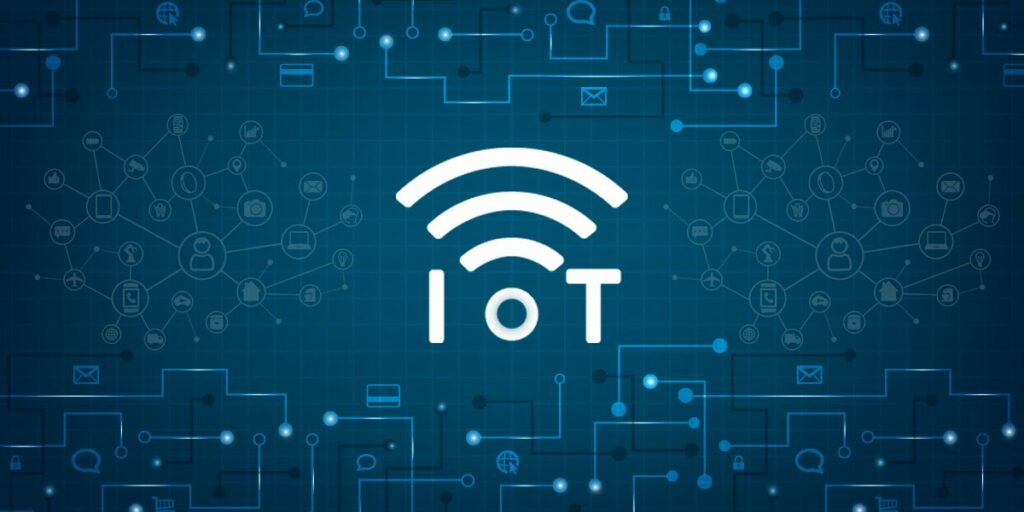Do you know that the number of devices connected to the internet is more than the number of people connected to the internet? From the health app on your smartwatch to your car’s features, chances are, every modern device today is connected to the internet in some or the other way. Now within the network, these devices and components can collect and convey data with each other, and publish it in the cloud. In most cases, these give you control over your smart systems remotely. Hence the term IoT or Internet of Things.
Let’s talk about it a little more.
What is IoT?
IoT or “Internet of Things” refers to a network of interconnected objects, devices, home systems, vehicles, appliances, digital and sensory components that connects and transmits data with each other over the internet. Be it your smartwatch, lights, home systems, or a virtual assistant such as Siri or Alexa, IoT is pretty much everywhere. Apart from its personal use, it has various other applications in the commercial, industrial, healthcare, infrastructural, and military sector.
The term IoT was hypothetically coined in 1999 by British technologist Kevin Ashton, but it wasn’t until 2011 that the technology was implemented in business practices. But hey, better late than never! By 2020, the IoT market has grown to a staggering 580 billion mark, and it’s supposed to grow even more in 2021.
Here are 7 ways IoT will reshape businesses in 2021.
- More data, better insights!
Data has always been an integral part of commerce. IoT is a significant game-changer in the way data used to be processed and analyzed. IoT apps have made it possible for businesses to access a greater amount of consumer data in real-time. Apart from that, IoT enabled software can track patterns by understanding users’ behavior and how one connects with a device. As a result, they get smarter and deliver a better user experience to consumers. It also allows companies to understand their audience better and gather better insights about the market.
- Increased productivity and efficiency with downtime reduction
With accurate information about the market and consumers, businesses can make changes in their model and increase productivity. Since IoT devices can connect and share information without human intervention, you can save a significant amount of time to accomplish lengthy tasks faster, without errors, and more efficiently.
- Remote working and workforce management
Work from home is in fashion these days. And one of the major benefits of IoT devices is that it allows you to work remotely. For instance, turning on your car heater before you even get in. But that’s just a simple one! IoT allows your employees to connect and work remotely, while at the same time, allows you to keep a real-time track of your employees’ performance. And should your business be free of large physical inventories or supplies, you can make maximum use of IoT to manage your projects and manpower.
- Inventory tracking and management
Inventory storing, tracking, and management is one of the most critical aspects of any business. Scenarios such as loss of assets, engagement of too many workers in solving inventory-related matters, and financial loss are too common when it comes to inventory management. But with IoT, you can say goodbye to many of these issues.
IoT applications enable you to track your inventory and assets throughout the supply and distribution chain. By installing IoT products, software, and surveillance systems in your warehouses and storage units, you can manage your inventory efficiently and accurately.
- Building new business models
The predictive algorithm embedded into IoT devices and apps is extremely capable of monitoring your product’s performance, and how it’s being used by consumers. The usage data generated by IoT networks can be used by businesses to not only make improvements but also to bring about new values to their products and services. IoT allows companies to experiment with new ways of business rather than sticking to conventional business practices.
- Better connectivity between the physical and digital world
IoT supports better synchronization between the physical and the digital world. After all, better connectivity and digital transformation are at the heart of IoT. Take your smartphone, for instance, it can be used as a remote control for your smart TV, AC, home system, your car, cooker, light fixings, and whatnot. Satellites, cellular towers, Wi-Fi, Bluetooth, etc., have enabled the tiniest of digital components and sensors to connect and share data and cloud in real-time. Smart power grids, smart cities, smart home systems, and vehicles are all perfect examples of how IoT connects the physical world with the digital.
- Cost-cutting and waste reduction
Cost-cutting is yet another byproduct of IoT products and services. Machine learning and Artificial Intelligence are two essential pillars of IoT. Smart mechanisms such as these are mostly error-free, faster, and environment friendly in many ways. The Internet of Things uses smart grid technologies to control energy flow and consumption by using economic alternatives like wind and solar power. IoT can lower the costs of manufacturing by reducing waste, consuming lesser non-renewable fuels, and disposing of unfeasible assets and equipment.
Conclusion
While the number of IoT devices is already more than 20 billion and is expected to cross 25 billion by 2021, IoT’s scope and true potential are yet to come. IoT’s more obvious benefits include better connectivity, high security, faster and accurate data processing, predictive maintenance, self-learning, tracking, and monitoring. Given the large scope of IoT as a promising piece of technology, it’s high time to integrate your business with it to unlock the gains that weren’t in your reach before.
